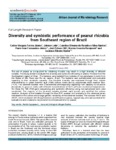Por favor, use este identificador para citar o enlazar este ítem:
http://www.alice.cnptia.embrapa.br/alice/handle/doc/983750Registro completo de metadatos
| Campo DC | Valor | Lengua/Idioma |
|---|---|---|
| dc.contributor.author | TORRES JÚNIOR, C. V. | pt_BR |
| dc.contributor.author | LEITE, J. | pt_BR |
| dc.contributor.author | SANTOS, C. E. de R. e S. | pt_BR |
| dc.contributor.author | FERNANDES JUNIOR, P. I. | pt_BR |
| dc.contributor.author | ZILLI, J. E. | pt_BR |
| dc.contributor.author | RUMJANEK, N. G. | pt_BR |
| dc.contributor.author | XAVIER, G. R. | pt_BR |
| dc.date.accessioned | 2014-04-01T11:11:11Z | pt_BR |
| dc.date.available | 2014-04-01T11:11:11Z | pt_BR |
| dc.date.created | 2014-04-01 | pt_BR |
| dc.date.issued | 2014 | pt_BR |
| dc.identifier.citation | African Journal of Microbiology Research v. 8 n. 6, p. 566-577, fev. 2014. | pt_BR |
| dc.identifier.uri | http://www.alice.cnptia.embrapa.br/alice/handle/doc/983750 | pt_BR |
| dc.description | The use of peanut as a trap-plant for obtaining rhizobia may result in a high diversity of efficient isolates. This study aimed to evaluate the diversity and symbiotic efficiency of peanut rhizobia from the Southeastern region of Brazil. The bacteria were isolated from nodules of two genotypes in soils from the States of São Paulo and Rio de Janeiro, Brazil. The bacteria were authenticated and evaluated regarding to their symbiotic capacity. The rhizobial diversity was evaluated through their culture characteristics on yeast mannitol agar (YMA) culture media and by polymerase chain reaction Box- (PCR). Two selected isolates were characterized phenotypically regarding their capacity to solubilize phosphate, to grow on media with different concentrations of NaCI, pH's and incubation temperatures. For these the 16S rRNA gene sequencing and symbiotic efficiency using non-autoclaved soils were conducted. The majority of the obtained isolates showed rapid growth and acidified the culture medium. Analysis of the isolates through the Box-PCR revealed low similarity to the reference strain indicated for the culture and a large genetic variability of the obtained isolates. The isolates AM 01 and AM 07, which clustered with Bradyrhizobium and Rhizobium genus, respectively, showed a potential for evaluations and a means to recommend new rhizobia strains for peanut. | pt_BR |
| dc.language.iso | eng | eng |
| dc.rights | openAccess | eng |
| dc.subject | Fixação biológica de notrogênio | pt_BR |
| dc.subject | Rizóbio | pt_BR |
| dc.subject | Peanut | pt_BR |
| dc.title | Diversity and symbiotic performance of peanut rhizobia from Southeast region of Brazil. | pt_BR |
| dc.type | Artigo de periódico | pt_BR |
| dc.date.updated | 2015-03-30T11:11:11Z | pt_BR |
| dc.subject.thesagro | Amendoim | pt_BR |
| dc.subject.thesagro | Arachis Hypogaea | pt_BR |
| riaa.ainfo.id | 983750 | pt_BR |
| riaa.ainfo.lastupdate | 2015-03-30 | pt_BR |
| dc.identifier.doi | 10.5897/AJMR 2013 . 5883 | pt_BR |
| dc.contributor.institution | PAULO IVAN FERNANDES JUNIOR, CPATSA; JERRI EDSON ZILLI, CNPAB; NORMA GOUVEA RUMJANEK, CNPAB; GUSTAVO RIBEIRO XAVIER, CNPAB. | pt_BR |
| Aparece en las colecciones: | Artigo em periódico indexado (CNPAB)  | |
Ficheros en este ítem:
| Fichero | Descripción | Tamaño | Formato | |
|---|---|---|---|---|
| Diversityandsymbioticperformanceofpeanut.pdf | 480.44 kB | Adobe PDF |  Visualizar/Abrir |









